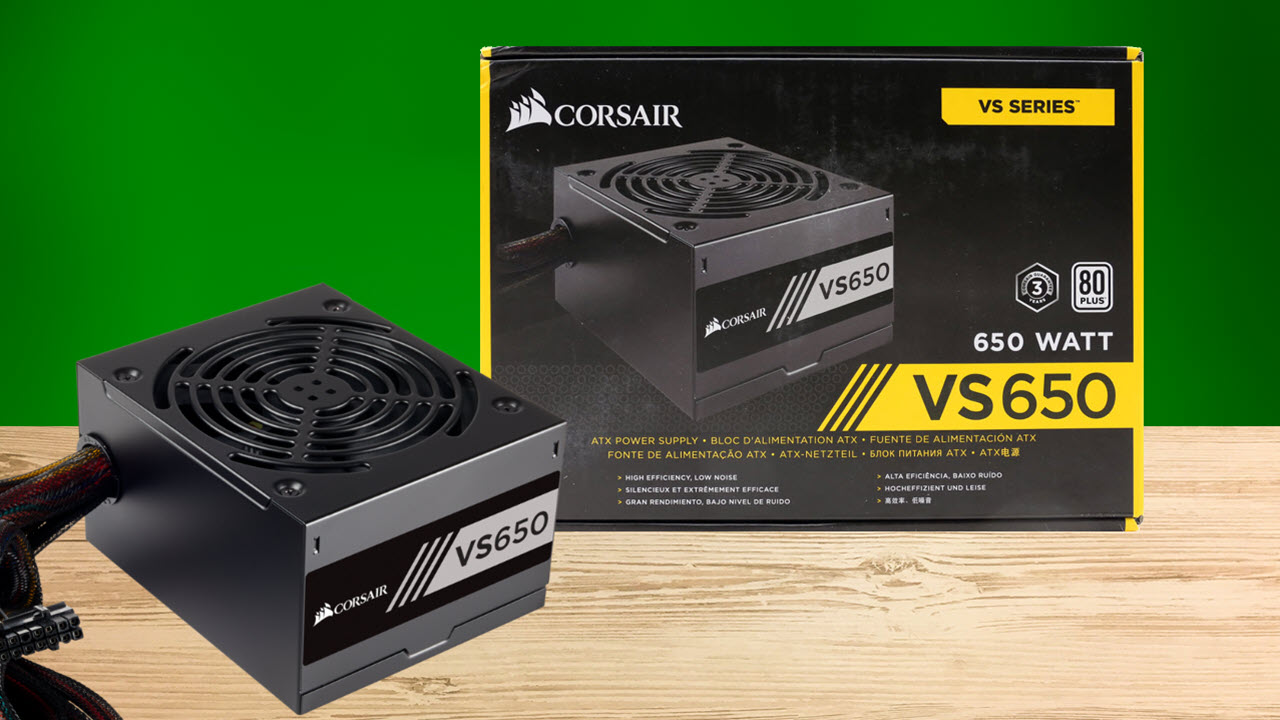Tom's Hardware Verdict
The Corsair VS650 is a solid choice for the price, but it cuts corners on efficiency and noise.
Pros
- +
Full power at 41°C
- +
Affordable
- +
Efficient 5VSB rail
- +
Accurate Power Ok signal
- +
80 PLUS and Cybenetics ratings
- +
3-year warranty
Cons
- -
Mediocre performance
- -
OCP at +12V is not properly set
- -
Noisy under high operating temperatures
Why you can trust Tom's Hardware
Specifications and Part Analysis
The Corsair VS650 is one of the most affordable 650W power supplies that you will find on the market today. There might be some rather unknown brands promising higher capacities at even lower prices, but this is a Corsair product so it is supported by a solid warranty and it offers decent performance while at the same time, the majority of its protection features operate properly. With a 46 bucks price in the US and around 47 pounds in the UK, the VS650 is a good choice for anyone on a really tight budget.
The VS line is the most affordable in Corsair's portfolio and its main competitor, as usual, is an EVGA line called N1. Unfortunately we haven't evaluated so far any of the EVGA N1 units, so we cannot comment on their performance, build quality and reliability. With a quick look at the specs of the VS and N1 models though, we easily spot a major difference. All VS models are certified by both 80 PLUS and Cybenetics while EVGA's N1 models don't hold any certifications, meaning that they haven't been evaluated by an independent organization so there are no efficiency results and other vital performance information on them.
The VS line consists of six non-modular units, with capacities ranging from 400W to 650W, which are manufactured by HEC. They are based on an older design in order to keep the production cost as low as possible, but still Corsair supports them with a three-year warranty which is long enough for the standards of this category. Corsair also states that those units are reliable, which is the most important feature in budget products like those, and indeed we didn't encounter a problem during our extensive and tough testing sessions. We are literally on the edge when we test highly affordable PSUs, because a failure besides a nice fireworks show can also lead to the destruction of our expensive power analyzer; if a PSU can damage our lab-grade equipment, imagine what it can do to sensitive system components like the CPU, GPU, RAM etc.












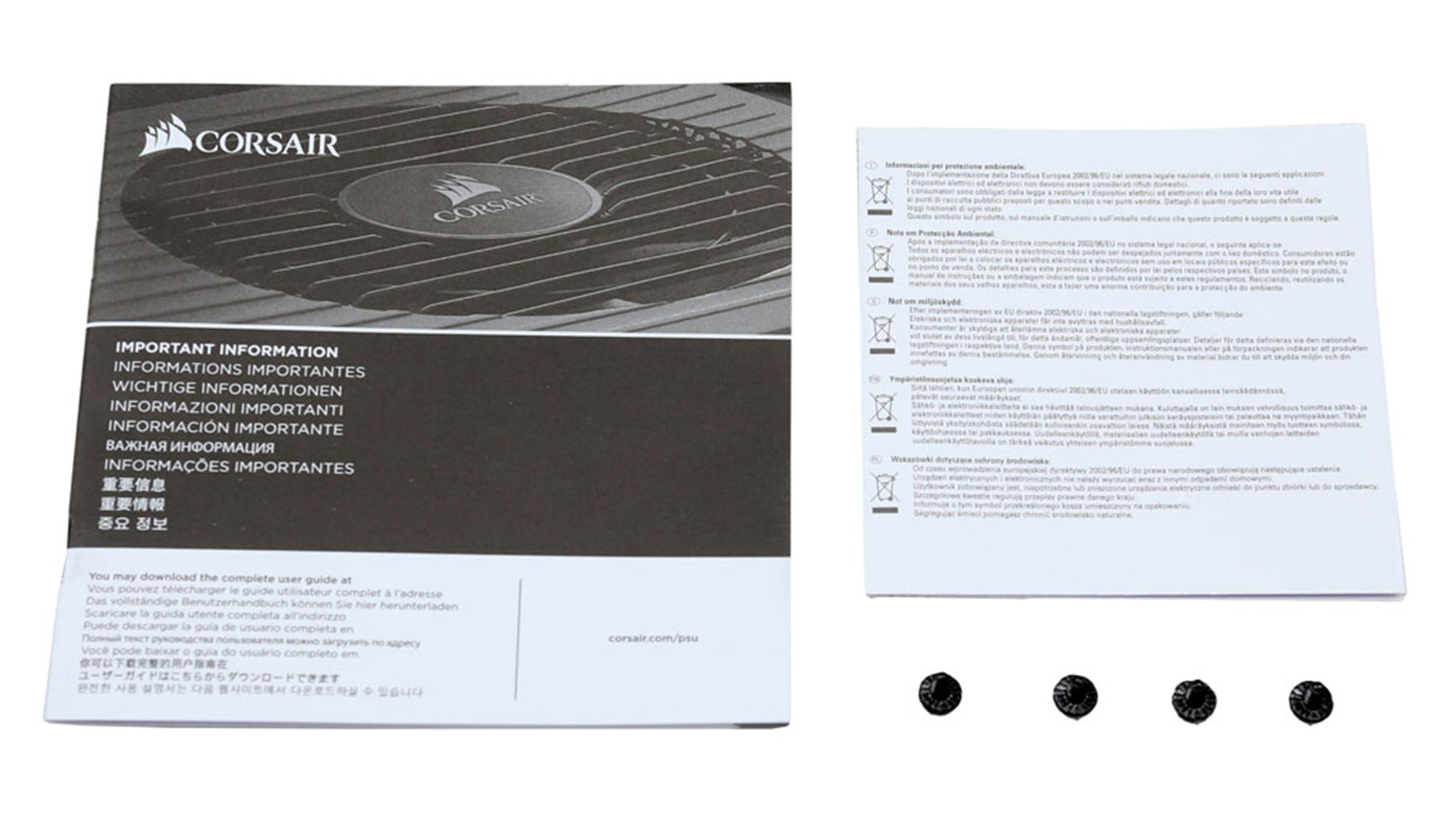
Specifications
| Manufacturer (OEM) | HEC |
|---|---|
| Max. DC Output | 650W |
| Efficiency | 80 PLUS, ETA-S (82-85%) |
| Noise | LAMBDA-S++ (30-35 dB[A]) |
| Modular | ✗ |
| Intel C6/C7 Power State Support | ✓ |
| Operating Temperature (Continuous Full Load) | 0 - 30°C |
| Over Voltage Protection | ✓ |
| Under Voltage Protection | ✓ |
| Over Power Protection | ✓ |
| Over Current (+12V) Protection | ✓ |
| Over Temperature Protection | ✓ |
| Short Circuit Protection | ✓ |
| Surge Protection | ✓ |
| Inrush Current Protection | ✓ |
| Fan Failure Protection | ✗ |
| No Load Operation | ✓ |
| Cooling | 120mm Sleeve Bearing Fan (D12SH-12) |
| Semi-Passive Operation | ✗ |
| Dimensions (W x H x D) | 152 x 87 x 128mm |
| Weight | 1.9 kg (4.19 lb) |
| Form Factor | ATX12V v2.4, EPS 2.92 |
| Warranty | 3 Years |
Power Specifications
| Rail | 3.3V | 5V | 12V | 5VSB | -12V | |
|---|---|---|---|---|---|---|
| Max. Power | Amps | 24 | 20 | 52 | 3 | 0.3 |
| Watts | 130 | 624 | 15 | 3.6 | ||
| Total Max. Power (W) | 650 |
Cables and Connectors
| Captive Cables | ||||
|---|---|---|---|---|
| Description | Cable Count | Connector Count (Total) | Gauge | In Cable Capacitors |
| ATX connector 20+4 pin (550mm) | 1 | 1 | 18-20AWG | No |
| 4+4 pin EPS12V (610mm) | 1 | 1 | 18AWG | No |
| 6+2 pin PCIe (550mm+110mm) | 1 | 2 | 18AWG | No |
| SATA (440mm+120mm+120mm) | 2 | 6 | 18AWG | No |
| SATA (440mm) / 4-pin Molex (+120mm+120mm) / FDD (+120mm) | 1 | 1 / 2 / 1 | 18-20AWG | No |
| AC Power Cord (1380mm) - C13 coupler | 1 | 1 | 18AWG | - |
All cables are non-modular, but they are sleeved at least with the sleeving going all the way back into the chassis. There are enough connectors provided, for a budget 650W unit, but the distance between the peripheral connectors is not long enough. Ideally we would like to see 150mm clearance between those connectors. Finally, the cable length is satisfactory given that the VS650 isn't destined for large full-tower chassis.






Component Analysis
We strongly encourage you to a look at our PSUs 101 article, which provides valuable information about PSUs and their operation, allowing you to better understand the components we're about to discuss.
| General Data | |
|---|---|
| Manufacturer (OEM) | HEC |
| PCB Type | Single Sided |
| Primary Side | |
| Transient Filter | 4x Y caps, 3x X caps, 2x CM chokes, 1x MOV, 1x Discharge IC |
| Inrush Protection | 2x NTC Thermistors |
| Bridge Rectifier(s) | 2x GBU806 (600V, 8A @ 100°C) |
| APFC MOSFETS | 3x Champion GP18S50G (500V, 28A @ 150°C, 0.19Ω) |
| APFC Boost Diode | 1x NXP BYC10-600 (600V, 10A @ 78°C) |
| Hold-up Cap(s) | 1x Teapo (400V, 330uF, 2000h @ 85°C, LH) |
| Main Switchers | 2x Infineon IPA50R280CE (500V, 11.4A @ 100°C, 0.28Ohm) |
| Combo APFC/PWM Controller | Champion CM6800TX |
| APFC Disconnect IC | Power Integrations SEN012DG |
| Topology | Primary side:Double Forward Secondary side: Passive Rectification & Group Regulation (12V & 5V tied together, 3.3V Indy regulated) |
| Secondary Side | |
| +12V SBRs | 4x PFC PFR30L60CT SBR (60V, 30A) |
| 5V & 3.3V | 5V: 2x MBR30L45CT (45V, 30A) 3.3V: 2x MBR30L45CT (45V, 30A) |
| Filtering Capacitors | Electrolytics: Teapo (1-3,000 @ 105°C, SC), 1x Teapo @ 5VSB (3-6,000 @ 105°C, SY) |
| Supervisor IC | Weltrend WT7527 (OVP, UVP, OCP, SCP, PG) |
| Fan Model | Yate Loon D12SH-12 (120mm, 12V, 0.3A, Sleeve Bearing) |
| 5VSB Circuit | |
| Rectifier | 1x PFC PFR10L60CT SBR (60V, 10A) |
| Standby PWM Controller | Power Integrations TNY289PG |
This is an outdated design using a double-forward topology in the primary side, whereas in the secondary side a number of Schottky barrier diodes (SBRs) regulate the rails. The major downside is the lack of independent circuits for the regulation of the +12V and 5V rails.
This means that the performance under highly unbalanced, among the rails, loads will be bad. For example if we apply a light load at +12V and a high load at 5V (and vice versa) the corresponding voltages will go crazy. This is because those two rails are tied together so when the 5V rail has to cope with a heavy load, the feedback signal increases its voltage level affecting as well the 12V rail's voltage, although the latter might only have a light load to face. Whenever this is the case the 5V rail will struggle to keep its voltage in control while the 12V rail's voltage will go sky high (see the CL1 test in the 10-110% load tests).
Get Tom's Hardware's best news and in-depth reviews, straight to your inbox.
The soldering quality is decent and we were surprised to find two NTC thermistors, responsible for protection against large inrush currents. Apparently a single one wasn't up to the task so Corsair asked for a second. The only problems on the long run can be the 85°C bulk cap and the Teapo SC caps in the secondary side, with the not so high lifetime. Nevertheless, at least Corsair used Teapo caps which usually deliver what they promise for.


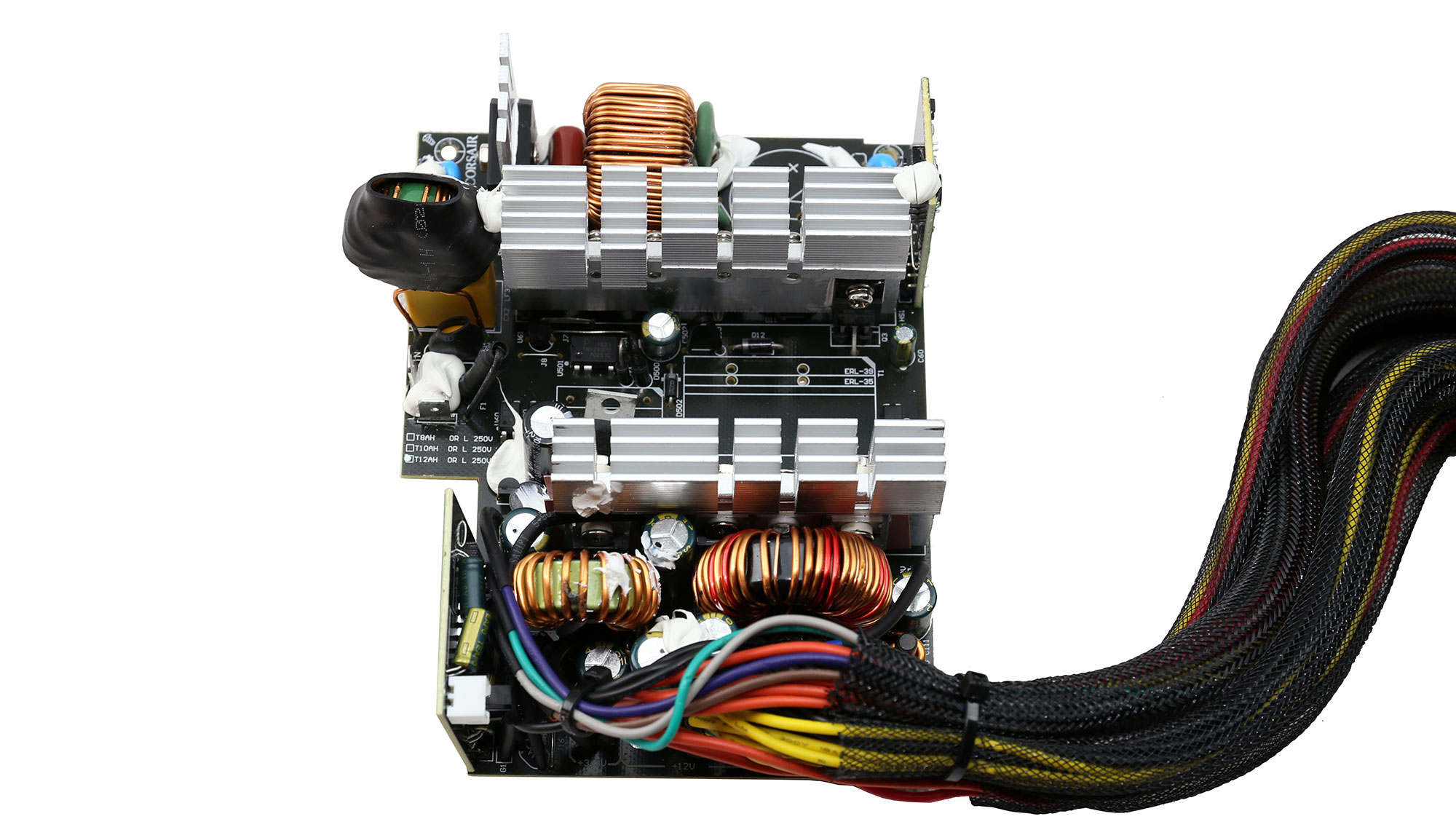
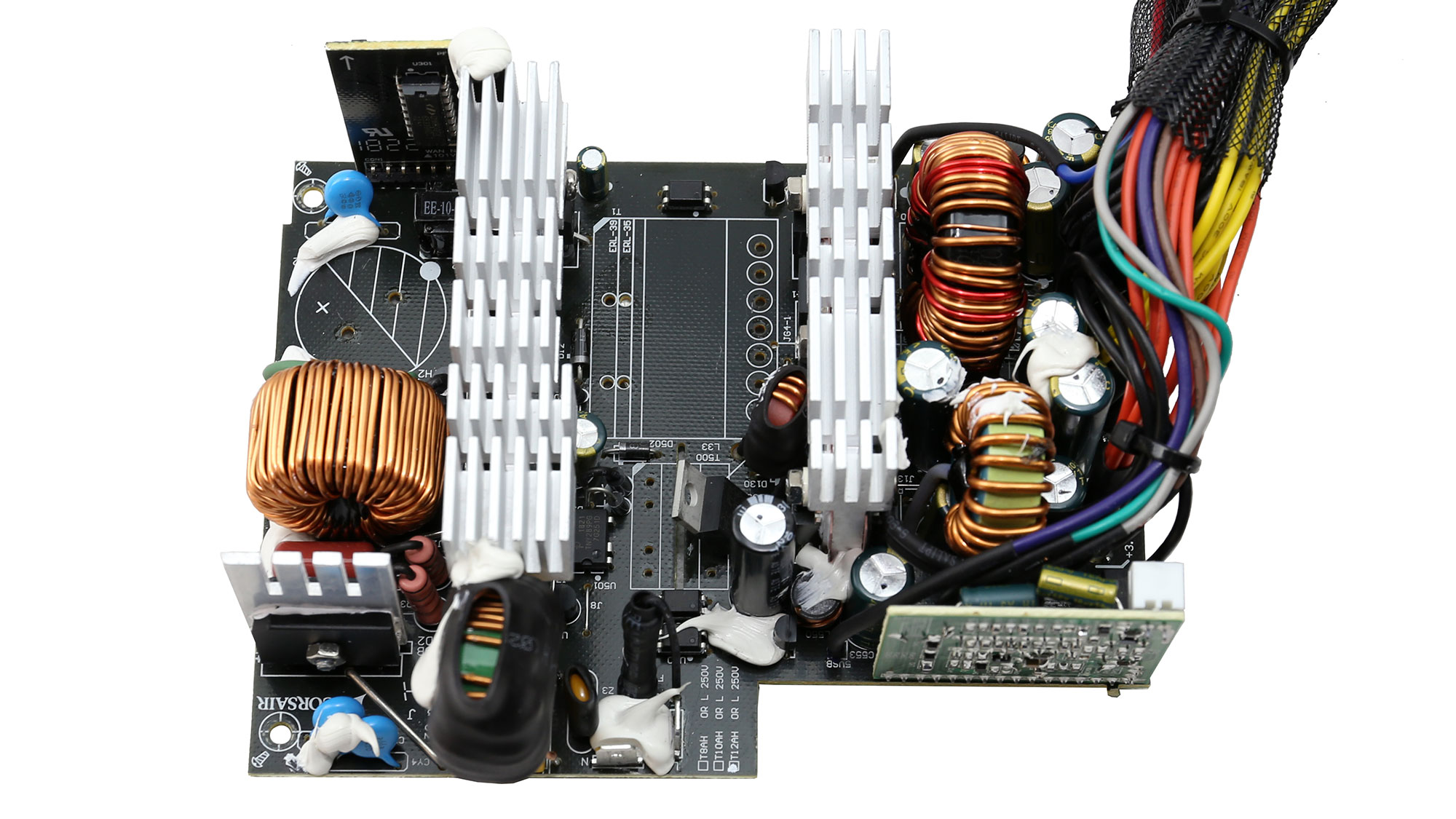


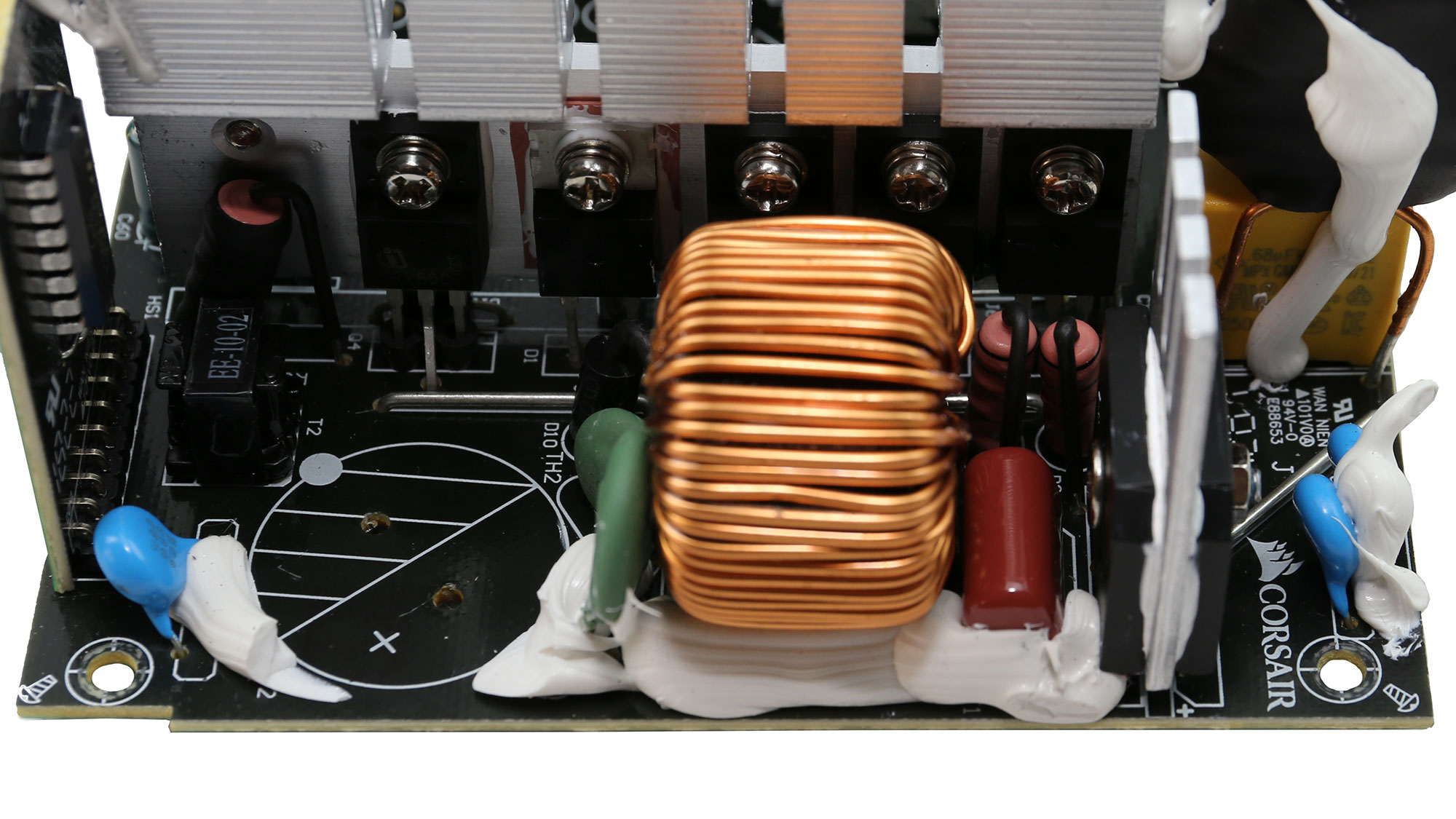







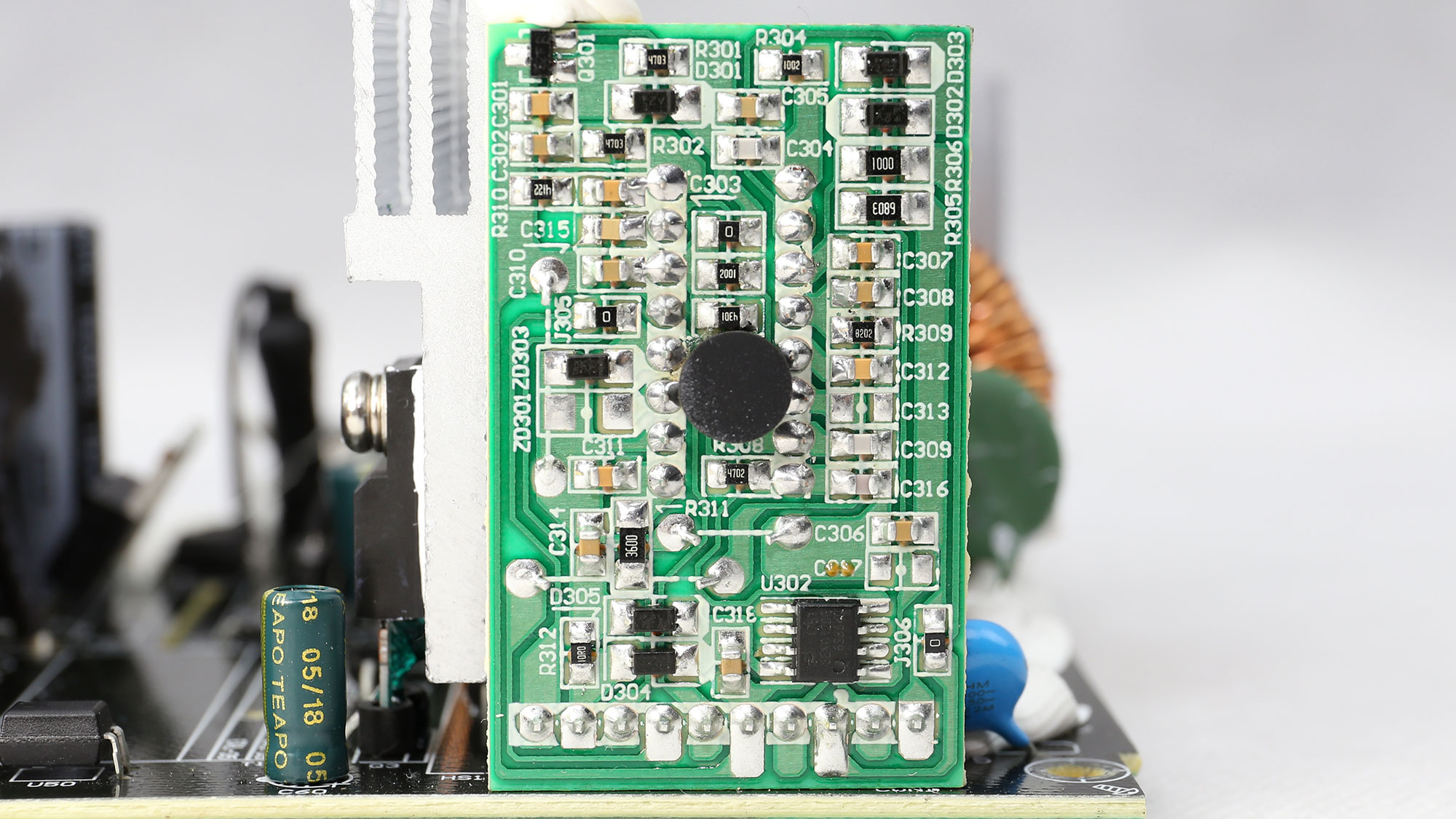






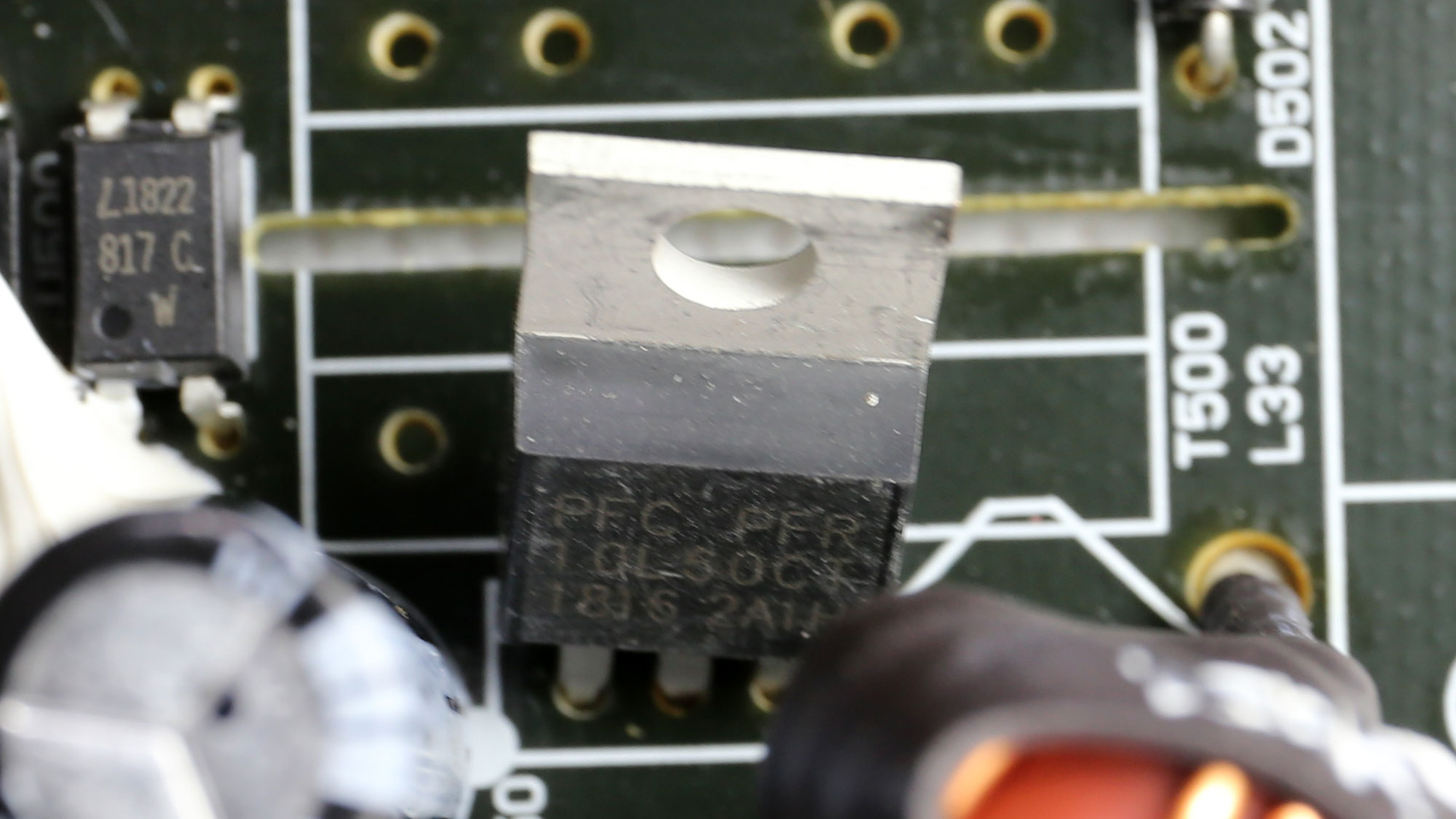


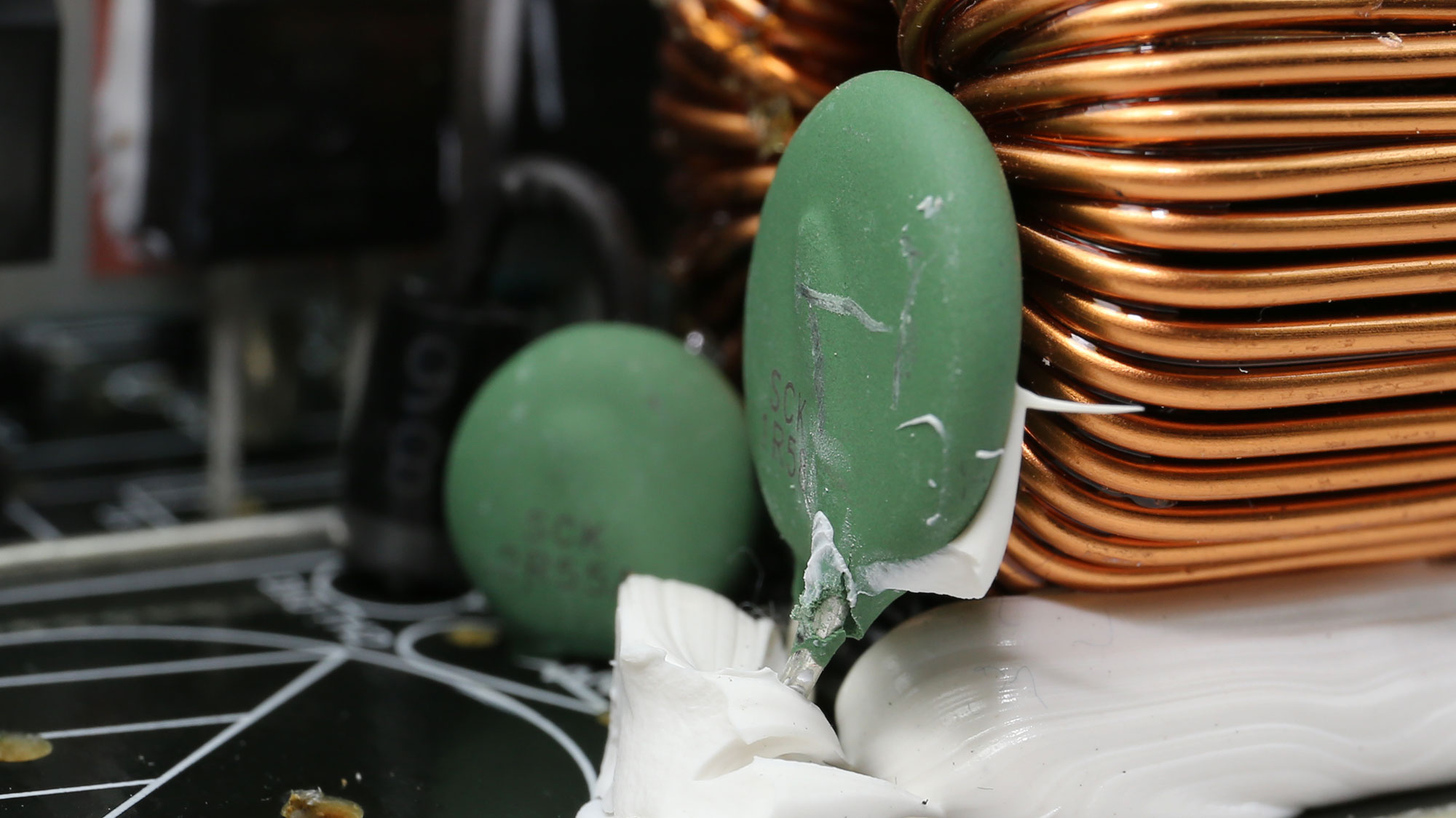









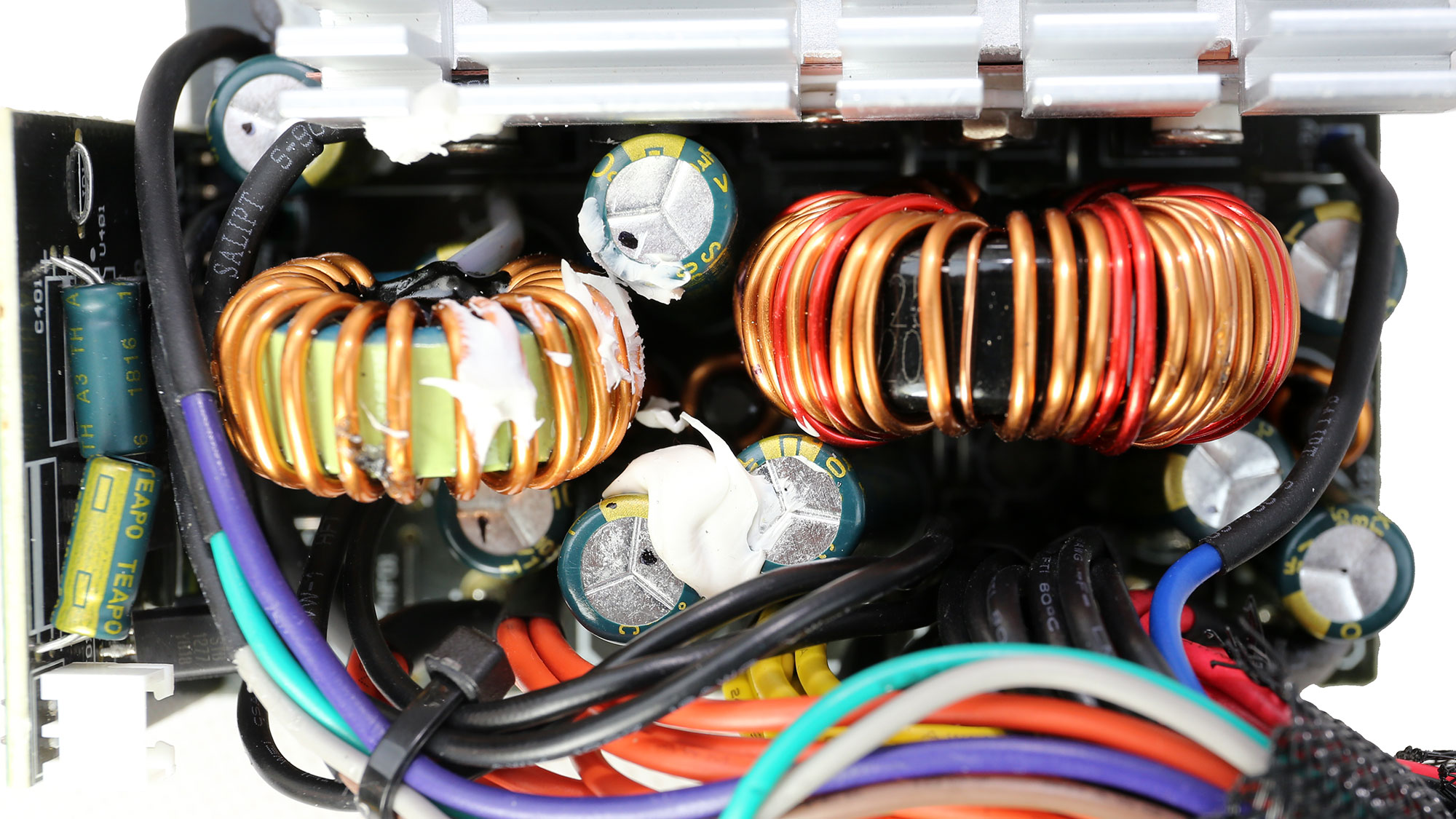

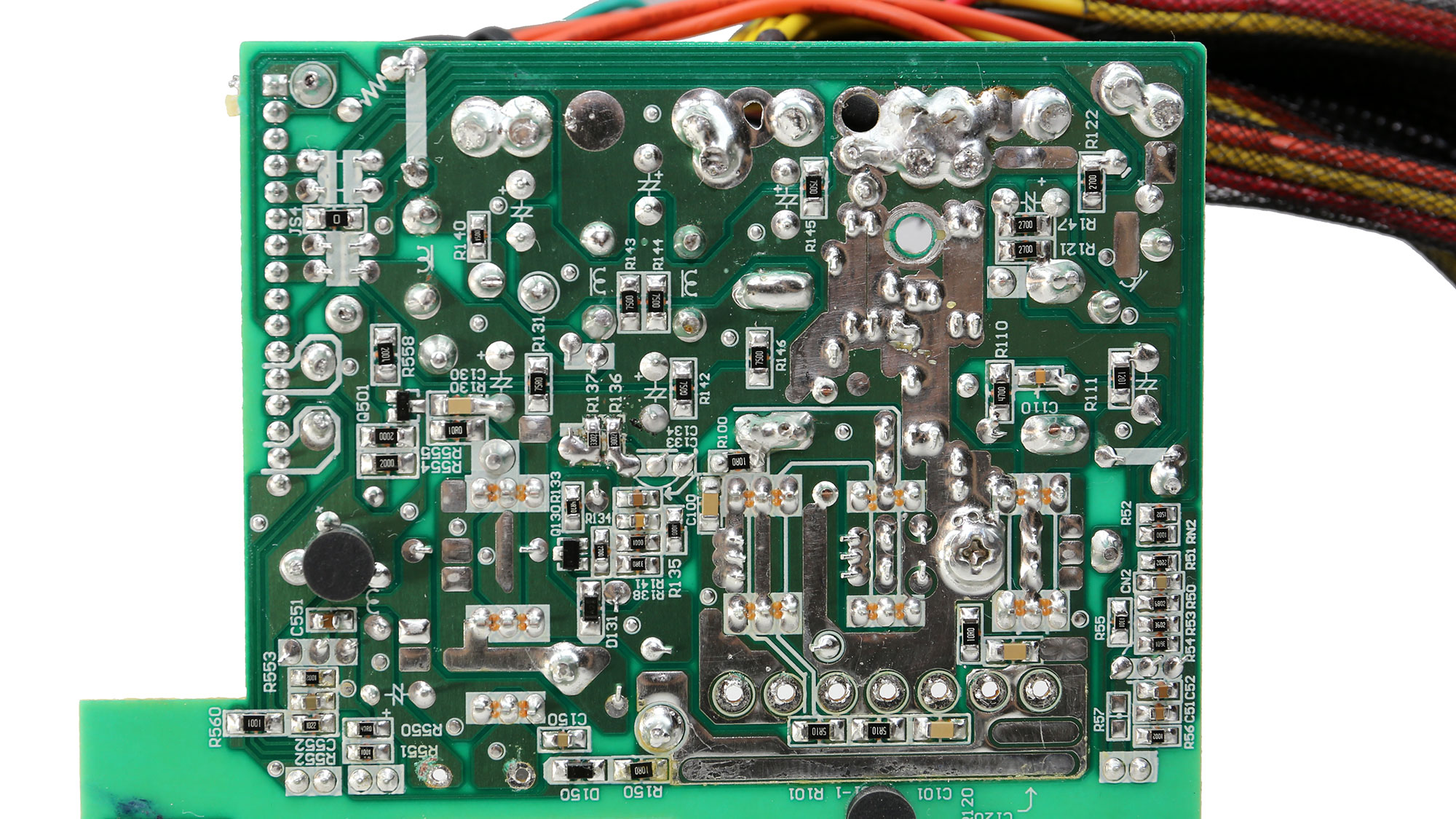
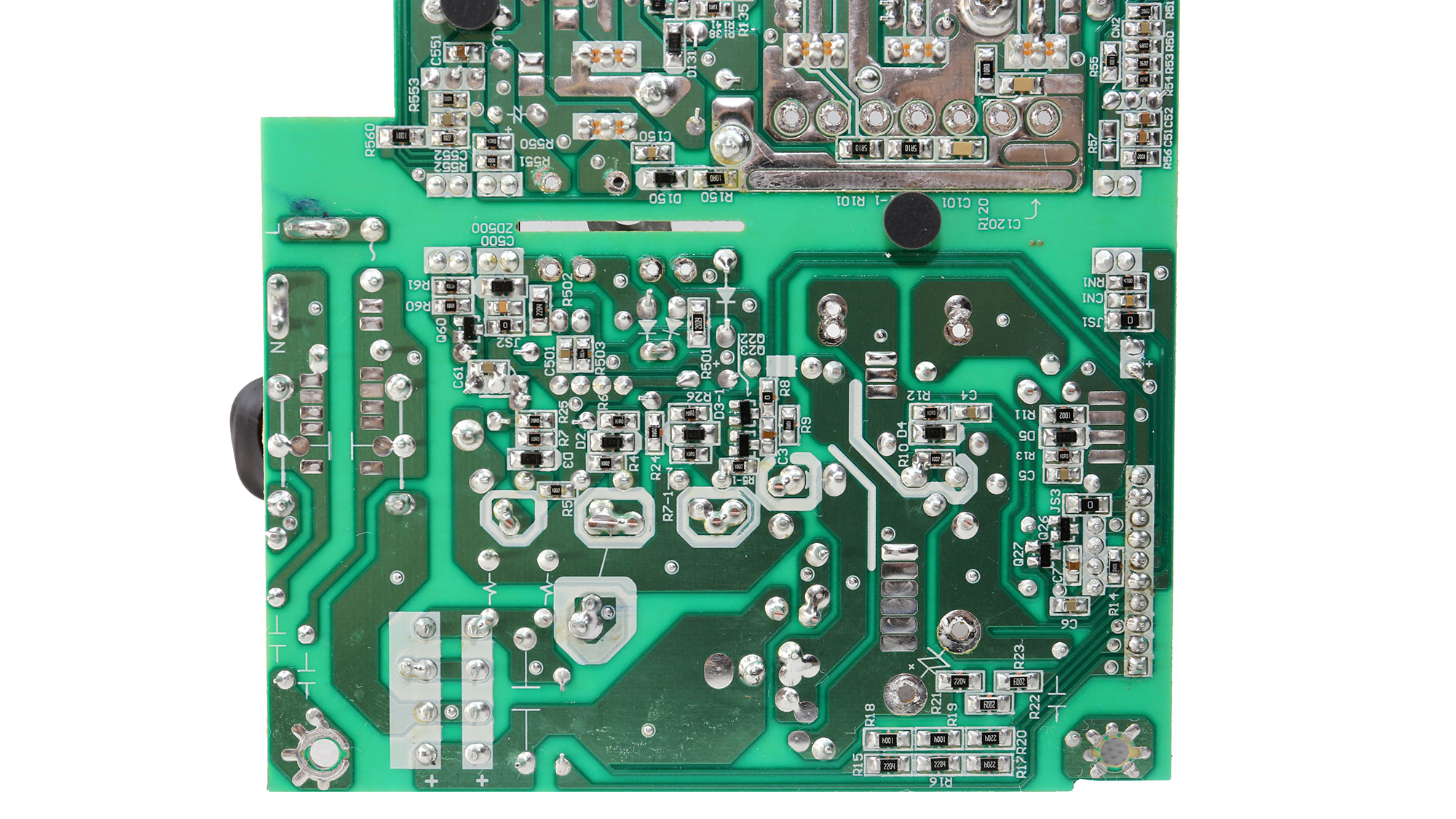


MORE: Best Power Supplies
MORE: How We Test Power Supplies
MORE: All Power Supply Content
Current page: Specifications and Part Analysis
Next Page Load Regulation, Hold-Up Time, Inrush Current, Efficiency and Noise
Aris Mpitziopoulos is a contributing editor at Tom's Hardware, covering PSUs.
